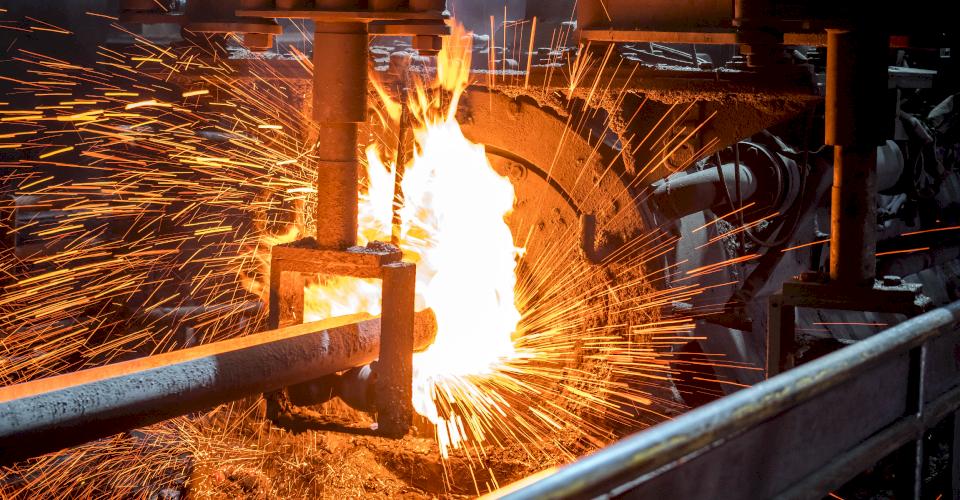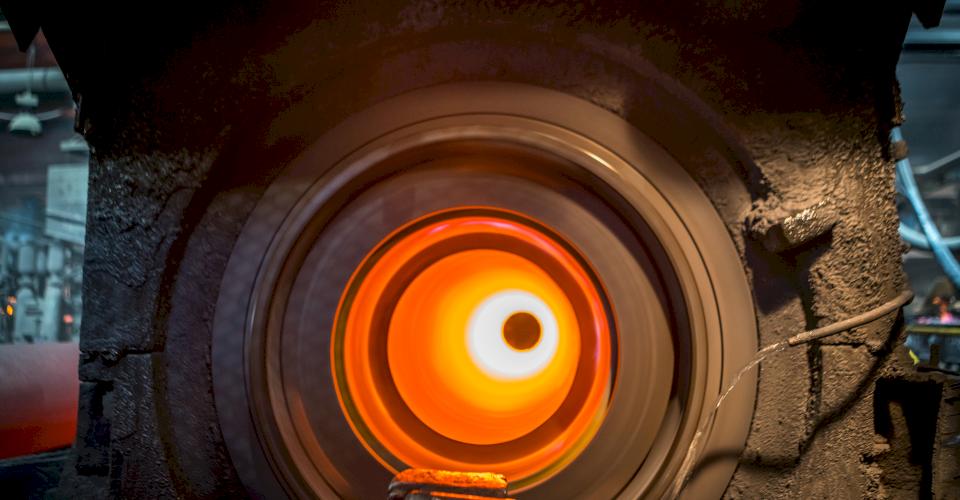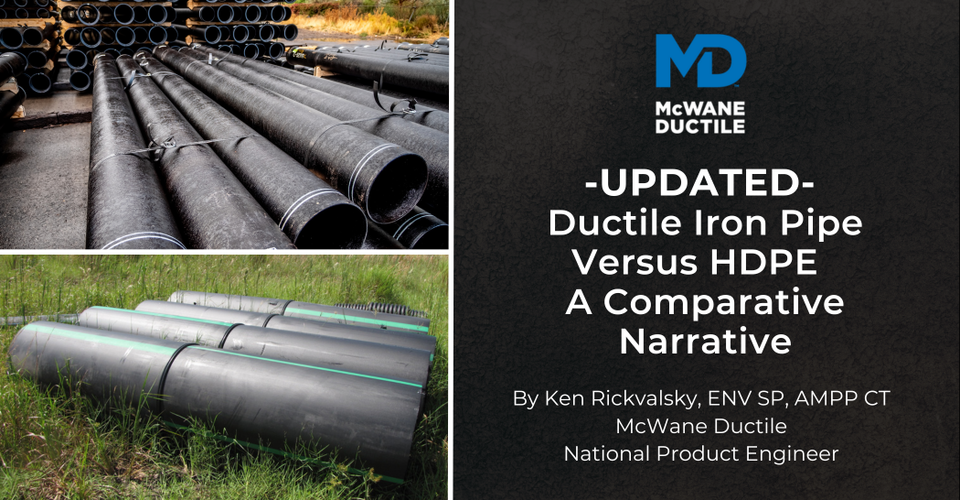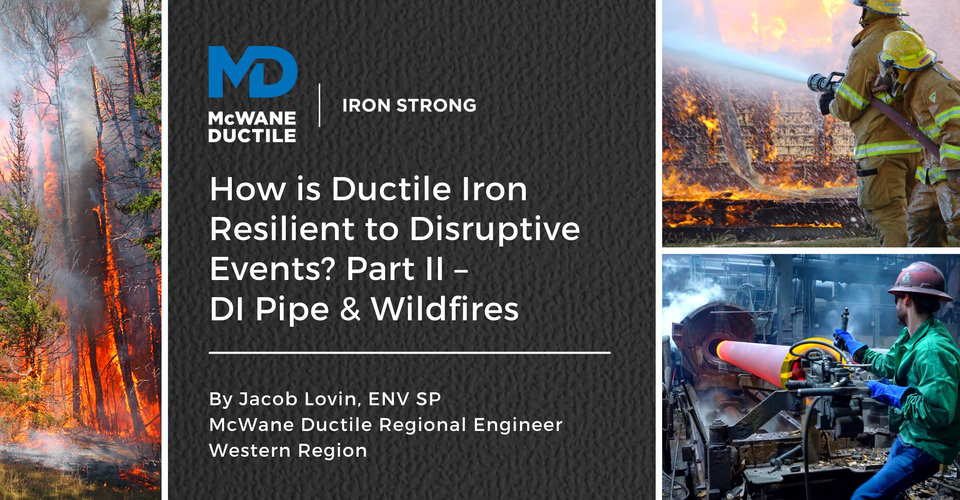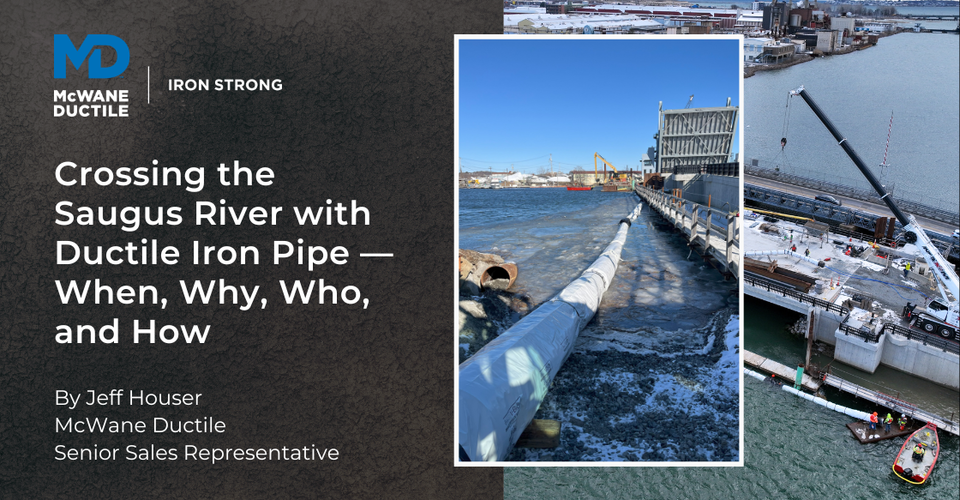Having spent the last 16 years selling Ductile iron pipe, I’ve fielded thousands of questions regarding design and installation recommendations.
One thing that has often confused users (whether I’m talking with engineers, distributors or contractors) is the difference between “Thickness Class” and “Pressure Class” pipe.
While both refer to a specific metal wall thickness of the barrel of the pipe, in this article, I am going to discuss the history of the two class standards, and what class of Ductile iron pipe you should use in your application.
“Thickness Class” Vs “Pressure Class.”
When Ductile Iron Pipe was introduced to the market in 1965, replacing “Cast” or “Gray” iron, pipe manufacturers reached a consensus that there should be a standardized protocol for determining wall thickness.
This new standard included considerations to the inherent strength advantage of ductile iron over its cast iron predecessor. The pipe manufacturers, or Member Companies, with assistance from the Ductile Iron Pipe Research Association (www.dipra.org), began working towards an agreeable set of standards.
DIPRA Member Companies currently include McWane Ductile, Canada Pipe, American Cast Iron Pipe Company and U. S. Pipe and Foundry).
To determine the appropriate wall thickness, the ability of the manufacturers to produce a consistent pipe wall of a given pipe diameter was weighted as the most important factor.
Primarily, the hoop stress equation was employed to govern wall thickness based on internal pressure. In conjunction with this step, equations that considered external loading and the resulting bending stress and/or an acceptable amount of deflection.
Now, when I talk about deflection of the pipe wall, please don’t get this confused with the deflection of the joint. Pipe wall deflection references the ability of the pipe to move from a circularcross-section to an oval configuration under a given stress level generated by the applicable external loads.
Empirical deflection testing was completed on cement mortar lined pipe and it was noted that the lining would begin to spall or crack at deflections ranging between 6 and 12%. With that data, it was decided that the limit would be set at 3% to maintain a 2:1 safety factor in the design for deflection.
Pro tip: Unlined ductile pipe can withstand deflections much higher than 6%. Also, the more flexible linings available today, such as ceramic epoxy, are capable of handling greater wall deflections, but again, the design is maintained for the most conservative case using cement lined pipe.
Based on the parameters discussed above, the member companies agreed to set a standard of thickness for ductile iron pipe as Class 1 – Class 6.
For each class increase for pipes 24” and smaller, a 0.03” increase in wall thickness was included. This arbitrary number was agreed upon by DIPRA member companies.
Other Design Considerations for Pipe Wall Thickness:
In addition to the established wall thickness design, there were also additional considerations given to the wall thickness which included a 0.05” – 0.09” (depending on diameter) casting tolerance and a 0.08” service allowance. The casting tolerance would account for any minor deviations in wall thickness during the manufacture.
The service allowance was included to help mitigate any minor corrosion that may take place in cast iron pipe. With the introduction of polyethylene encasement, this “corrosion allowance” is no longer needed, but it is still included in the overall design (as an added factor of safety).
Evolution of Thickness Class “50” Pipe:
Industry experts knew that the design of the stronger ductile iron pipe was extremely conservative and believed that the pipe could be consistently manufactured with a thinner wall.
So, in 1976, the design criteria were revisited, and testing determined the addition of “CL 0” to the original thickness class designation was needed. However, many of the folks involved in this decision questioned whether a class 0 pipe would be accepted by end users.
Therefore, the number “5” was added to the front of the class designation and the CL50 – CL56 designations which still exist today were born.
You are probably thinking, that’s great and all, but why is there now another class consideration utilizing a pressure class rating system?
In 1991, DIPRA member companies decided to include a pressure class rating system for the following two reasons:
- Most other materials in the water / wastewater industry were sold based on the same pressure ratings including valves, fittings, etc.
- Because of the strength of Ductile Iron, manufacturers realized that the pipe could be made even thinner while still holding its circular shape. This change allowed designers and end users to realize cost savings versus the “Thickness Design” designations while still utilizing pipe that met the needs of their system.
Now that we’ve had a little history lesson, you probably want to get to the meat of the discussion and learn how to determine the correct wall thickness to specify for a given scenario.
To understand what class of pipe you should specify, you must understand that ductile iron pipe is a flexible conduit (unlike its cast iron predecessors). Because it is a flexible conduit, as is PVC, HDPE and steel conduits, the pipe can deform and re-form to its original shape as forces are applied to, and removed from, the pipe wall.
Two factors to consider when deciding what wall thickness, and therefore correlating pressure or thickness class, for your specific need:
- Internal Pressure – How much pressure is exerted by the fluid flowing through the pipe? When determining internal pressure, you must consider working pressure, test pressure, fire flow, etc. Once all are determined, the highest of all should be used to determine your internal pressure consideration.
- External Loading – This includes backfill, asphalt, traffic and any buildings above the surface that may add load to the pipe.
Ductile iron pipe is the only material that considers external loading when determining the wall thickness needed for a specific pipe diameter. All others simply rely on the internal pressure of the fluid.
While there are many formulas that will help you determine the pipe wall needed for your project, McWane Ductile has developed a tool to help minimize the effort and alleviate the frustration - the “Thickness Design Calculator” as part of thePocket Engineer. If you are not familiar with the McWane Pocket Engineer, you can download here at MD Pocket Engineer. This tool has many other useful design calculators as well as access to technical information.
By utilizing the PE, you can easily input design criteria such as pipe diameter, maximum internal pressure, depth of cover, wheel load and the weight of the soil.
Once you input this information, it will yield results that tell you exactly what thickness of pipe and the correlating class of pipe that your application requires. The results are broken down by the five DIPRA / AWWA recognized trench types. It will also let you know if the internal pressure or external loading (bending stress) govern the design.
Now that you know the differences in “Thickness Class” and “Pressure Class” along with some considerations that must be examined when determining pipe wall thickness, you need to utilize, you are probably still wondering:
Is “Thickness Class” or “Pressure Class” Better?
Unfortunately, there is not a universal answer.
In pipe sizes 12” and below, no pipe is manufactured with a pressure rating less than 350 PSI. So, if you ask for pipe that is CL50 or better for any of those sizes, you will get pipe that, at its lowest pressure rating, is rated for a minimum 350 PSI.
Once you move into pipe sizes larger than 14”, there are wall thicknesses of CL50 that will fall below the wall thickness of CL350 pipe. The easiest thing to do is to determine the wall thickness requirement for your application and then refer to a chart like the one below.
Given the conservative nature of ductile iron pipe design, which includes a 100-psi surge allowance and a 2:1 nominal safety factor, no ductile iron pipe manufactured is designed not to withstand at least 500 psi of water pressure.
You may wonder how that can be considering 30” and larger have pressure class ratings as low as 150. Well, if you add the 100-psi surge allowance and then multiply that by the 2:1 safety factor, you will see that even CL150 ductile iron pipe is designed to hold 500-psi.
Not only has the pipe wall of every piece of pipe been designed to a minimum of at least 500-psi, every pipe that is manufactured is tested to a minimum of 500-psi before leaving the foundry.
If you ever need assistance with your pipeline design or have any questions, please contact your local sales representative.
Need Assistance With Your Waterworks Project?
McWane Ductile offers multiple services to our customers extending far beyond manufacturing DI pipe. From estimating to design, from production to installation, we take great pride in providing education and assistance to water professionals throughout the water industry.
Check out all our digital offerings:



